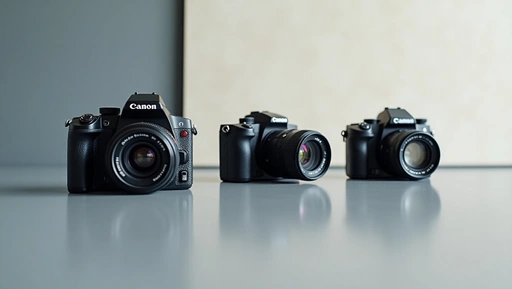Compact vs Bridge Cameras: Which is Better for Beginners?

Choosing your first camera can be overwhelming, especially with so many models available. Two popular categories for beginners are compact cameras and bridge cameras. While both are designed to be more user-friendly than professional DSLRs or mirrorless systems, they offer different strengths and limitations. Understanding these differences will help you decide which fits your photography needs best.
What is a Compact Camera?
Compact cameras, often called point-and-shoot cameras, are small, lightweight, and highly portable. They are designed for ease of use, with most settings automated so you can focus on framing your shot. Modern compacts often come with decent zoom ranges, image stabilization, and good low-light performance.
Because of their portability, compact cameras are ideal for travel, everyday photography, and casual use. They can easily slip into a pocket or small bag, making them perfect for spontaneous shooting.
What is a Bridge Camera?
A bridge camera is a mid-point between a compact and a DSLR. It’s larger and has a more advanced zoom lens, often with focal lengths equivalent to 24mm–1200mm or more. Unlike compacts, bridge cameras usually offer manual controls for exposure, shutter speed, and aperture, giving beginners more creative flexibility.
Bridge cameras are designed to “bridge” the gap between simple point-and-shoot cameras and professional systems. They’re not as pocket-friendly, but they can handle a wider range of subjects, from wide landscapes to extreme telephoto wildlife shots, without the need to change lenses.
Key Differences Between Compact and Bridge Cameras
Size & Portability: Compact cameras win here. They’re lighter and easier to carry, perfect for those who don’t want the bulk of a larger camera. Bridge cameras, while still lighter than DSLRs, require more space in your bag.
Zoom Range: Bridge cameras generally have a huge zoom advantage. This makes them better for sports, wildlife, or travel photography where you can’t always get close to your subject.
Control & Features: Compact cameras focus on automation, while bridge cameras offer more manual settings. Beginners who want to learn photography basics like aperture and shutter speed will find bridge cameras more educational.
Image Quality: While both can produce excellent results in good lighting, larger-sensor compacts sometimes have an edge in low-light conditions. However, high-end bridge cameras with bigger sensors can match or even surpass compacts in certain situations.
Price: Entry-level compact cameras are usually cheaper, while bridge cameras can cost more due to their extended zoom and extra features.
Which is Better for Beginners?
If your goal is convenience, portability, and quick shooting without adjusting too many settings, a compact camera is the way to go. They’re perfect for family events, vacations, and day-to-day use. However, if you’re interested in learning manual photography and experimenting with different shooting styles, a bridge camera offers more creative control.
Interestingly, many beginner-friendly cameras—whether compact or bridge—share features with popular vlogging cameras for beginners, such as flip screens, decent microphones, and good video quality. This crossover makes them suitable for both photography and video content creation.
Where to Buy in Pakistan
Finding the right camera is easier when you can test it in person. Areas like the camera market lahore have a variety of compact and bridge cameras, allowing you to compare models side-by-side. This hands-on experience can make a big difference when deciding which camera feels right in your hands.
Final Thoughts
Both compact and bridge cameras have their advantages for beginners. Compacts are better for those who value portability and simplicity, while bridge cameras are ideal for those who want versatility and room to grow creatively. The best choice depends on your shooting style, budget, and how much you want to learn about photography.



